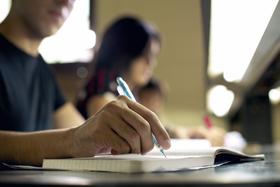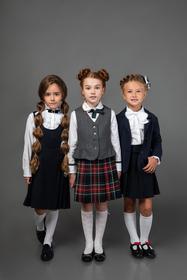For the 2025-26 school year, there are 12 public schools serving 8,185 students in Boston, MA (there are , serving 3,525 private students). 70% of all K-12 students in Boston, MA are educated in public schools (compared to the MA state average of 88%).
The top-ranked public schools in Boston, MA are Boston Latin School, Eliot K-8 Innovation School and Quincy Elementary School. Overall testing rank is based on a school's combined math and reading proficiency test score ranking.
Boston, MA public schools have an average math proficiency score of 51% (versus the Massachusetts public school average of 43%), and reading proficiency score of 52% (versus the 45% statewide average). Schools in Boston have an average ranking of 7/10, which is in the top 50% of Massachusetts public schools.
Minority enrollment is 79% of the student body (majority Hispanic and Black), which is more than the Massachusetts public school average of 47% (majority Hispanic).
Best Public Schools in Boston, MA (2025-26)
School
(Math and Reading Proficiency)
(Math and Reading Proficiency)
Location
Quick Facts
Rank: #11.
Boston Latin School
(Math: 80% | Reading: 87%)
Rank:
Rank:
10/
Top 5%10
78 Ave Louis Pasteur
Boston, MA 02115
(617) 635-8895
Boston, MA 02115
(617) 635-8895
Gr: 7-12 | 2,401 students Student-teacher ratio: 18:1 Minority enrollment: 65%
Rank: #22.
Eliot K-8 Innovation School
(Math: 73% | Reading: 67%)
Rank:
Rank:
9/
Top 20%10
16 Charter Street
Boston, MA 02113
(617) 635-8545
Boston, MA 02113
(617) 635-8545
Gr: PK-8 | 792 students Student-teacher ratio: 13:1 Minority enrollment: 37%
Rank: #33.
Quincy Elementary School
(Math: 57% | Reading: 42%)
Rank:
Rank:
7/
Top 50%10
885 Washington Street
Boston, MA 02111
(617) 635-8497
Boston, MA 02111
(617) 635-8497
Gr: PK-5 | 733 students Student-teacher ratio: 11:1 Minority enrollment: 83%
Rank: #44.
Boston Arts Academy
Alternative School
(Math: 30-34% | Reading: 60-64%)
Rank:
Rank:
6/
Top 50%10
174 Ipswich Street
Boston, MA 02215
(617) 635-6470
Boston, MA 02215
(617) 635-6470
Gr: 9-12 | 473 students Student-teacher ratio: 9:1 Minority enrollment: 87%
Rank: #55.
Hurley K-8 School
(Math: 40-44% | Reading: 35-39%)
Rank:
Rank:
5/
Bottom 50%10
70 Worcester Street
Boston, MA 02118
(617) 635-8489
Boston, MA 02118
(617) 635-8489
Gr: PK-8 | 349 students Student-teacher ratio: 14:1 Minority enrollment: 78%
Rank: #66.
Edward M. Kennedy Academy For Health Careers (horace Mann
Charter School
(Math: 10-14% | Reading: 45-49%)
Rank:
Rank:
3/
Bottom 50%10
10 Fenwood Road
Boston, MA 02115
(617) 635-8450
Boston, MA 02115
(617) 635-8450
Gr: 9-12 | 375 students Student-teacher ratio: 10:1 Minority enrollment: 98%
Rank: #77.
Quincy Upper School
(Math: 32% | Reading: 27%)
Rank:
Rank:
3/
Bottom 50%10
152 Arlington Street
Boston, MA 02116
(617) 635-8940
Boston, MA 02116
(617) 635-8940
Gr: 6-12 | 532 students Student-teacher ratio: 10:1 Minority enrollment: 94%
Rank: #88.
Match Charter Public School
Charter School
(Math: 23% | Reading: 22%)
Rank:
Rank:
2/
Bottom 50%10
1001 Commonwealth Avenue
Boston, MA 02215
(617) 232-0300
Boston, MA 02215
(617) 232-0300
Gr: PK-12 | 1,185 student Student-teacher ratio: 10:1 Minority enrollment: 98%
Rank: #99.
Snowden International High School
(Math: 20-24% | Reading: 15-19%)
Rank:
Rank:
2/
Bottom 50%10
150 Newbury Street
Boston, MA 02116
(617) 635-9989
Boston, MA 02116
(617) 635-9989
Gr: 9-12 | 445 students Student-teacher ratio: 12:1 Minority enrollment: 94%
Rank: #1010.
Melvin H. King South End Academy
(Math: ≤10% | Reading: ≤5%)
Rank:
Rank:
1/
Bottom 50%10
90 Warren Avenue
Boston, MA 02116
(617) 635-9976
Boston, MA 02116
(617) 635-9976
Gr: 2-12 | 134 students Student-teacher ratio: 4:1 Minority enrollment: 93%
Rank: #1111.
Blackstone Elementary School
(Math: 8% | Reading: 6-9%)
Rank:
Rank:
1/
Bottom 50%10
380 Shawmut Avenue
Boston, MA 02118
(617) 635-8471
Boston, MA 02118
(617) 635-8471
Gr: PK-6 | 581 students Student-teacher ratio: 10:1 Minority enrollment: 96%
Rank: n/an/a
Boston Adult Tech Academy
Alternative School
20 Church St
Boston, MA 02116
(617) 635-1542
Boston, MA 02116
(617) 635-1542
Gr: 11-12 | 185 students Student-teacher ratio: 9:1 Minority enrollment: 98%
Boston, Massachusetts Public Schools (Closed)
School
Location
Quick Facts
Dorchester Preparatory Charter School (Closed 2013)
Charter School
75 Pleasant St
Boston, MA 02108
(617) 680-7830
Boston, MA 02108
(617) 680-7830
10 Fenwood Rd
Boston, MA 02115
(617) 635-8450
Boston, MA 02115
(617) 635-8450
Gr: K-5 | 205 students Student-teacher ratio: 12:1 Minority enrollment: 97%
Young Adult Center (Closed 2006)
Alternative School
Suffolk Superior Court-rm 705
Boston, MA 02108
(617) 725-8133
Boston, MA 02108
(617) 725-8133
Gr: 11 | 1 student
Frequently Asked Questions
What are the top-ranked public schools in Boston, MA?
The top-ranked public schools in Boston, MA include Boston Latin School, Eliot K-8 Innovation School and Quincy Elementary School.
How many public schools are located in Boston?
12 public schools are located in Boston.
What percentage of students in Boston go to public school?
70% of all K-12 students in Boston are educated in public schools (compared to the MA state average of 88%).
What is the racial composition of students in Boston?
Boston public schools minority enrollment is 79% of the student body (majority Hispanic and Black), which is more than the Massachusetts public schools average of 47% (majority Hispanic).
Which public schools in Boston are often viewed compared to one another?
Popular comparisons of public schools in Boston include: Edward M. Kennedy Academy For Health Careers (horace Mann vs. Boston Latin School, Quincy Elementary School vs. Eliot K-8 Innovation School, Quincy Upper School vs. Boston Latin School
Recent Articles

Public School Open House & Enrollment Season Guide
A parent-focused guide to the public school open house and enrollment season, with expert questions, timelines, and decision tips.

School Supply Budget 2026: Fees, Books, Tech Costs
School Supply Budget 2026 guide for parents, covering fees, textbooks, technology, and hidden extras to plan ahead.

Education Funding in America (2025 Update)
Comprehensive 2025 update on public school funding in America, new federal and state policies, per-pupil spending, and equity challenges.





